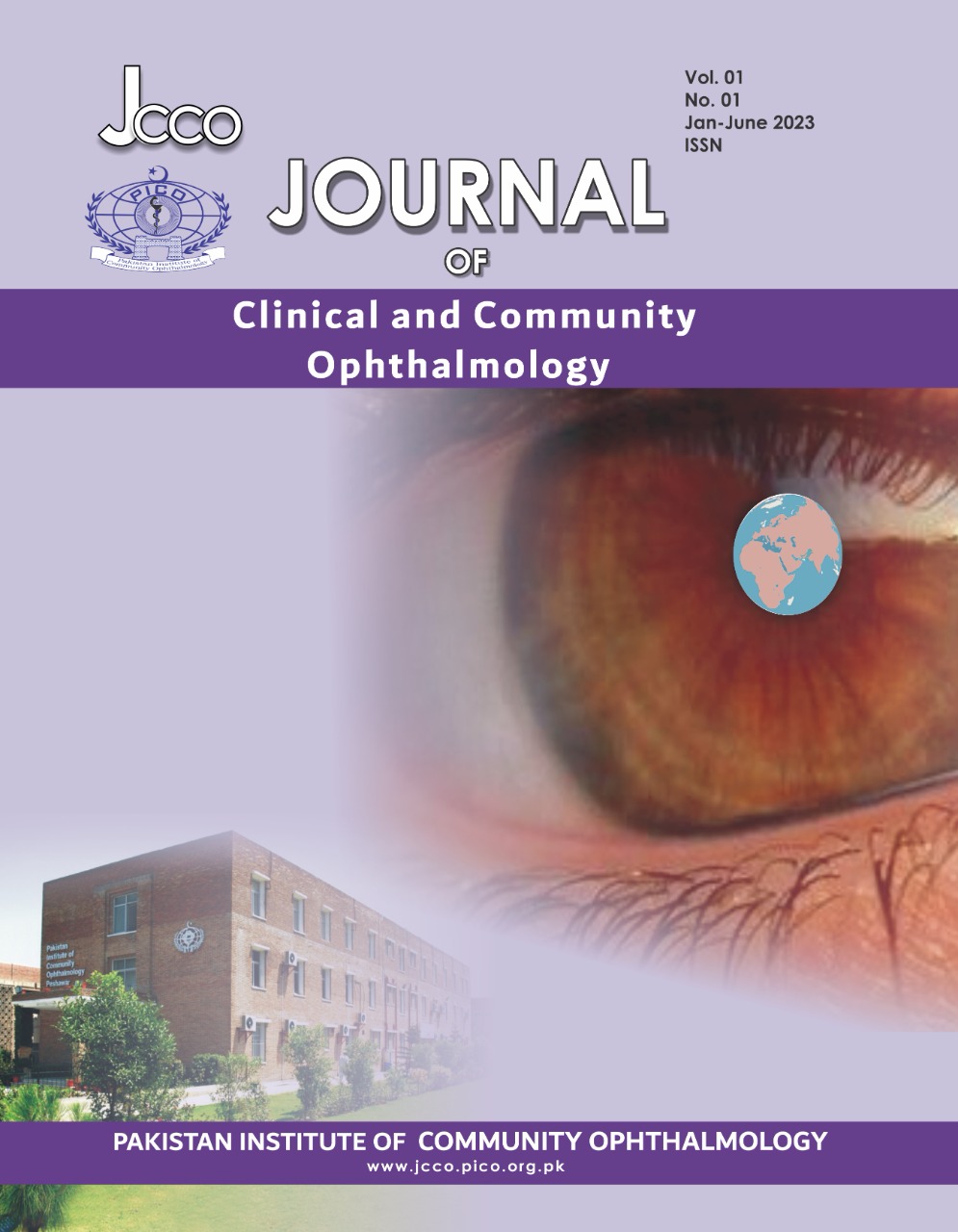Presentation Patterns and Complications of Vernal-Keratoconjuntivitis
DOI:
https://doi.org/10.71177/jcco.v1i01.25Keywords:
vernal- keratoconjunctivitis, keratoconus, Blindness, glaucoma, cataractAbstract
Aim: The aim of the study is to determine the pattern and complications of vernal-keratoconjunctivitis.
Study design: This is a retrospective observational study.
Duration and setting of study: This study was done on patients presenting to a private ophthalmologist's clinic in Peshawar over a period of fifteen months from July 2017 to October 2018.
Methods: Patient consent was not required. During the research, the principles of Helsinki declaration were strictly adhered to.
Results: In this study we evaluated 1180 patients suffering from vernal- keratoconjunctivitis (VKC). The majority of patients with VKC were male (75%). Out of 1180 patients, 378 (32.04%) had severe VKC. The most common complication was keratoconus (n=311, 26.35%). 4% patients had corrected visual acuity of less than 6/60 in their one or both eyes and four patients (0.34%) were blind with absolutely no perception of light. Sixty six patients (5.59%) had developed steroid induced glaucoma and forty two patients (3.55%) had steroid induced cataract. The
ocular findings patients with severe VKC that led to blindness or severe visual impairment were keratoconus, corneal ulcers, corneal plaques and scars, steroid-induced cataracts and steroid-induced glaucoma.
Conclusions: Vernal - keratoconjunctivitis can lead to vision loss and therefore need proper management. Use of steroids in VKC can lead to steroid induced glaucoma and catraract and should be used with caution.
Downloads
Published
How to Cite
Issue
Section
License
Copyright (c) 2023 Mandana Haroon Orakzai, Karimullah Khan, Mustafa Rasheed, Muhammad Daud Khan

This work is licensed under a Creative Commons Attribution-NonCommercial 4.0 International License.






